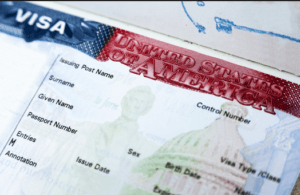 Despite the threats that terrorism and cross-border crimes pose to nations, visa facilitation enabling free movement of people around the world has been noted as a key factor in tourism development.
Despite the threats that terrorism and cross-border crimes pose to nations, visa facilitation enabling free movement of people around the world has been noted as a key factor in tourism development.
In its 2015 Visa Openness Report, the UNWTO argues that notable progress has been made in the area of visa facilitation in recent years.
“Despite of continuous challenges, the world’s openness continues to grow and it is at its highest level ever,” it said.
According to the UN agency, tourism has continued to expand and diversify over the past six decades.
“It is now one of the largest and fastest-growing economic sectors in the world. Many new tourist destinations have emerged alongside the traditional ones of Europe and North America,” it adds.
In its analysis, the report says from 1980 to 2014, international tourist arrivals (i.e., overnight visitors) grew four-fold from 279 million in 1980 to 1,132 million in 2014, corresponding to an average growth of 4.2 per cent a year.
In the same period, the export value of tourism – that is, international tourism receipts, including international passenger transport – increased from $125 billion in 1980 to $1.5 trillion in 2014, representing the same annual average growth as that of international tourist arrivals.
The UNWTO forecast that in the long-term, international tourist arrivals are expected to continue to grow at the sustained pace of 3.3 per cent a year on average, reaching 1.8 billion by 2030.
The report indicates that in 2015, destinations around the world still require on average approximately two thirds of the world’s population to obtain a traditional visa prior to departure, adding that, some 18 per cent of the world’s population is able to enter a destination without a visa, while another 15 per cent can receive a visa on arrival and 6 per cent is able to obtain eVisas
“While at the beginning of 2008, destinations requested an average of 77 per cent of the world’s population to apply for a traditional visa prior to departure, this percentage decreased to 61 per cent in 2015.
In total, improvements of visa requirements were made in 7,421 destination-source market country pairs between 2010 and 2015,” it said.
The analysis points to a total of 54 destinations that significantly facilitated the visa process for citizens of 30 or more countries between 2010 and 2015, by changing their visa policies from “traditional visa” to either “eVisa”, “visa on arrival” or “no visa required”.
Destinations, when reviewing their visa policies, tended to thoroughly review and introduce changes, the report noted.
“Out of the 7,421 total improvements between 2010 and 2015, 6,357 were done by those countries that significantly changed their visa policies,” it said.
The analysis of different facilitation measures showed that between 2010 and 2014, the most common visa policy change implemented was from traditional visa to visa on arrival. However, between 2014 and 2015, data indicates that the majority of positive changes introduced during that period were from traditional visa to eVisa, the report said, adding that the benefits of visa facilitation taking place within economic and regional blocs continue not to be limited to members only but also affect the relationship with non-members in a positive way.
The introduction of an African passport by the African Union at its 27th Summit in Kigali, Rwanda this year has been seen as a major step in integration of the continent. The move is also expected to trigger intra-Africa trade.
While global trade is estimated at about $3 trillion, Africa’s share is only about 3 per cent and intra-African trade is hovering around 10 to 12 per cent.
Visa facilitation could be a catalyst for growth in Africa through tourism and trade.
By Emmanuel K. Dogbevi
Copyright © 2016 by Creative Imaginations Publicity
All rights reserved. This article or any portion thereof may not be reproduced or used in any manner whatsoever without the express written permission of the publisher except for the use of brief quotations in reviews.
